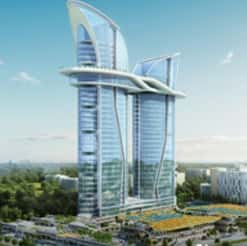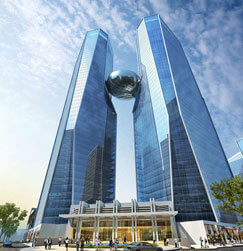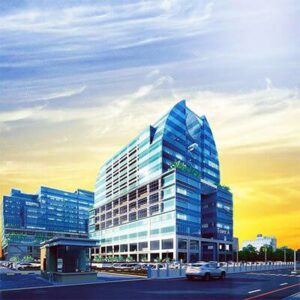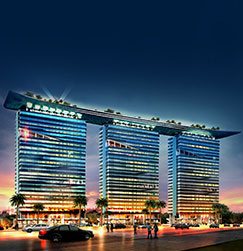Viewing the Market:
The real estate sector in India will contribute nearly 13 per cent of the country’s GDP by 2025. The commercial real estate market, retail, and hospitality are also growing significantly, providing the much-needed infrastructure for India’s growing needs. India’s commercial real estate sector predicts accelerated institutional investors’ large-scale investments in the upcoming years.
There has been a boost in the commercial real estate sector in the country because of the government initiatives such as Make in India and other reforms in the real estate sector, such as the introduction of the Real Estate Regulatory Authority (RERA) GST. Developers and buyers have moved despite their initial troubles, resulting in transparency and competence, attracting increasing foreign direct investments (FDI) in commercial estate.

The country’s economic growth is driving demand for commercial property. Government initiatives, urban development policies, and programs (Smart City, AMRUT) expect to contribute to the need for real estate infrastructure.
Sectors such as IT and ITeS, retail, consulting and e-commerce have also registered high demand for office space in recent times. The commercial office stock in India crossed 700 million square feet by 2019. The gross office absorption in top Indian cities has also increased by nearly 25 per cent year-on-year to 36.4 million square feet in 2018.
Concerning the commercial real estate segment, REITs also assumes the increased demand in sectors such as manufacturing and IT-related institutions due to better pricing and growth opportunities. The move awaits to fuel the further growth and development in India’s overall real estate market, as they help developers reduce the stress of raised capital costs involved in funding projects. The need for more co-working space has seen a rapid increase in recent times. Around 13 per cent of the total office segment was there in 2019 compared to 5 per cent in 2017. Regardless of the organization’s size, real estate players find attractive models in response to the demand for shared spaces.
Reports Scope:
This report proposes to furnish a detailed outline of the Indian commercial real estate market. It focuses on the business dynamics, technological trends, insights and government actions in the retail real estate sector. It also analyses the key professionals present in the market and the competing landscape in the Indian commercial real estate market.
Key Market Trends:
Office markets to witness increased growth in
the country-

The office market in India has been observing a constant improvement since the second quarter of 2017. Cities like Bangalore, Hyderabad, and Mumbai have seen nearly 2-3% growth rates for office spaces.
The ever-expanding service division has boosted the demand for office spaces, one of India’s most significant drivers of the industrial real estate sector. The cumulative office transaction in the first share of 2019 was a full 28 million sq ft, and the IT/ITES sector continues leading this office space demand. The IT sector in India is progressing towards high-value segments like artificial intelligence, data analytics, and product development, which will additionally intensify the need.
In the second share of 2019, Bengaluru observed the most leading area of about 0.8 million square meters of new office area completions. In comparison, Ahmedabad and Pune recorded completions of about 0.2 million square meters in that year.
Retail Space likely to witness robust growth-
Currently, retail accounts for a meagre portion of the Indian real estate market. Organized retailers are less, and suburban/office space developers mainly develop designed retail space.
Nevertheless, the retail space is witnessing strong growth off-late, with the planned retail segment in India, which expects to grow at 25 to 30% over the next five fiscal years. The extension of organized retail depends upon demographic factors, increasing disposable incomes, changes in shopping habits, the entry of international retailers into the market and the growing number of retail malls. The leading organized retailers in India currently include Tata-Trent, Pantaloon, Shopper’s Stop and the RPG Group.
The entire newly completed malls in 2018 stood at 7.8 million square feet, which saw an increase in the upcoming years. A considerable contribution to this came from the southern cities of Hyderabad and Delhi, which observed a vital influx of mall supply.
Competitive Landscape-

Indian commercial real estate has maintained a strong point in the market. It is becoming a preferred address for global institutional investors encouraged by robust office space take-up, falling vacancy levels, and rising rentals.
India’s commercial real estate market is reaching a consolidation phase as many developers offer commercial properties contractions. The small-scale developers are also blending with the big real estate developers or exiting the market. Some of the country’s major commercial real estate players include DLF, Godrej Properties, Housing Development and Infrastructure Ltd (HDIL) and Oberoi Realty.











